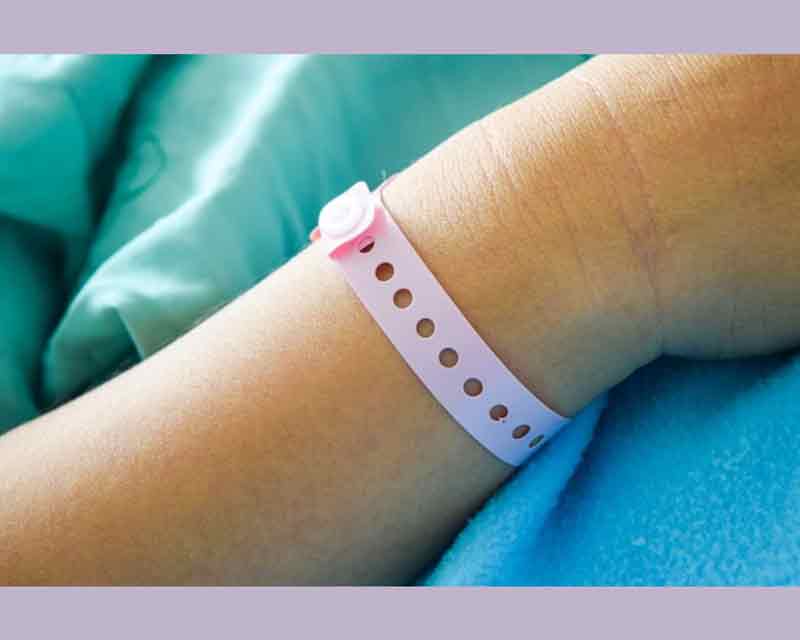Discovering the Numerous Kinds of Patient Identification Band Used in Medical Facilities
In the elaborate world of health care, the vital function of Patient Identification bands usually goes undetected. These bands, varying from easy paper wristbands to advanced RFID bands, create the foundation of Patient safety protocols, ensuring accuracy in Patient Identification. The huge variety of these bands, each with its distinct advantages and limitations, is commonly forgotten. As we navigate via this topic, one might acquire understanding into the refined complexities and essential significance of such bands in clinical facilities.
Recognizing the Importance of Patient Identification Bands
While they might seem like simple accessories, Patient Identification bands play a crucial function in clinical centers. These bands offer as a vital device for validating Patient identification, preventing medical errors related to misidentification. Patient Identification bands additionally aid in enhancing management jobs, ensuring precise record-keeping and invoicing.
Typical Paper Wristbands: Their Use and Limitations
Typical paper wristbands have been a staple in Patient Identification across various medical facilities. While their use prevails, they harbor specific constraints that might affect their efficiency in Patient administration. This area will concentrate on the range of their application and the intrinsic drawbacks associated with their usage.
Paper Wristbands: Use Extent
In the world of Patient Identification, paper wristbands have long held a critical duty. These bands are typically made use of in outpatient settings, where the Patient's keep is temporary. The wristbands include crucial details such as the Patient's name, day of birth, and an unique Identification number. This simple, yet efficient system, permits doctor to swiftly and properly identify people, making certain the proper therapy is carried out. Paper wristbands are also utilized in emergency situation situations, where quick Identification is vital. Their usage encompasses occasions like blood contribution drives and mass vaccination programs, additionally stressing their flexibility. Regardless of developments in modern technology, the humble paper wristband stays a trusted and affordable service for Patient Identification in numerous healthcare scenarios.
Limitations of Paper Wristbands
Regardless of their widespread usage, paper wristbands are not without their downsides. In enhancement, paper wristbands frequently do not have the technical abilities of even more modern choices, such as barcoding or RFID chips, limiting their capability to simply displaying created info. Paper wristbands can create discomfort or skin irritability to some people, especially when worn for extensive periods.
Barcoded Wristbands: Innovations in Patient Identification
While Patient Identification has actually long been an important facet of medical care, the introduction of barcoded wristbands symbolizes a significant jump ahead. These bands utilize the simplicity of barcoding innovation, enabling Patient info to be promptly scanned and accessed. They improve the rate and accuracy of Patient Identification, lowering the risk of medical mistakes connected to misidentification. Barcoded wristbands are cost-efficient, easy to create, and remove handwriting mistakes common with hands-on systems. They are not without restrictions. While they offer improvements over standard bands, the barcode can become smudged or used, providing it unreadable. Despite this, barcoded wristbands continue to be an important device in modern health care setups, symbolizing the junction of modern technology and Patient treatment.
Radio Frequency Identification (RFID) Bands: an Action In The Direction Of Futuristic Healthcare
The evolution of Patient Identification bands has produced the development of Superhigh frequency Identification (RFID) Bands (patient identification band). These cutting-edge devices existing vital benefits for healthcare centers, providing a more reliable and technologically advanced methods of Patient Identification. The implementation of RFID in medical care is a substantial action towards a much more advanced method to Patient administration and safety
Comprehending RFID Bands

RFID Bands: Trick Benefits
Embracing a future where technology and healthcare combine, superhigh frequency Identification bands supply numerous crucial benefits. Mainly, these bands improve Patient safety and security by supplying precise, immediate Identification, thereby reducing clinical errors. RFID bands can store a vast quantity of Patient information, including clinical background and allergies, enabling individualized care. They also simplify administrative jobs, as the automated information entrance replaces hand-operated processes, improving performance and decreasing paperwork. RFID bands offer real-time tracking of patients, essential in risky atmospheres such as surgical procedure or extensive treatment. Lastly, these bands are resistant and durable to ecological aspects, making sure constant performance. Overall, RFID bands represent a substantial development in Patient Identification technology, benefiting both people and doctor.
Executing RFID in Health Care
These bands provide a smooth method to track and recognize patients, guaranteeing their safety and boosting effectiveness in therapy procedures. RFID bands minimize clinical errors by giving precise Patient Identification, which is important in avoiding misdiagnosis or incorrect medication management. Thus, the execution of RFID bands is a considerable action towards enhancing Patient security and healthcare shipment.

Color-Coded Wristbands: Assisting in Quick and Accurate Medical Diagnosis
In the bustling environment of a medical facility, color-coded wristbands have actually become important tools for swift and exact Identification of a client's clinical problem. These wristbands, put on by patients, bring specific shades that represent different clinical conditions or statuses. For example, red might suggest allergy threats, while yellow may signify a loss danger. This system is created to provide immediate aesthetic signs to health care service providers, enhancing Patient security and care high quality. In emergency scenarios, making use of these wristbands permits rapid decision-making. However, the effectiveness discover this of color-coded wristbands depends upon the harmony of shade analysis throughout health care establishments, needing typical standards for regular application.
Methods for Efficient Execution and Monitoring of Patient ID Bands
Attaining optimal use Patient Identification bands demands a well-structured approach for their implementation and monitoring. The initial step includes training all health personnel on the value of correctly applying and checking out these bands. Healthcare facilities need to standardize the usage of ID bands throughout all divisions, making certain harmony and minimizing inconsistencies. Routine audits ought to be carried out to confirm adherence to policies and to fix any incongruities. Patient education and learning is likewise critical; individuals must recognize the objective of the bands and the requirement for their constant wear. patient identification band. Lastly, it's necessary to have a back-up strategy in position, such as barcode scanning or biometrics, to guarantee that Patient Identification is never compromised.
Verdict
Patient Identification bands are critical in clinical centers to guarantee safety and security and precision. Effective execution and administration of these bands can substantially lower medical errors, enhance effectiveness, and improve general Patient treatment.
These bands, varying from basic paper wristbands to advanced RFID bands, form the backbone of Patient security methods, ensuring precision in Patient Identification.The evolution of Patient Identification bands has brought about the introduction of Radio Frequency Identification (RFID) Bands. Overall, RFID bands represent a significant innovation in Patient Identification innovation, benefiting both clients and health care service providers.
RFID bands decrease medical errors by supplying precise Patient Identification, which is vital in stopping misdiagnosis or wrong medicine management. Patient education is likewise essential; people have to understand the function of the bands and the requirement for their consistent wear.